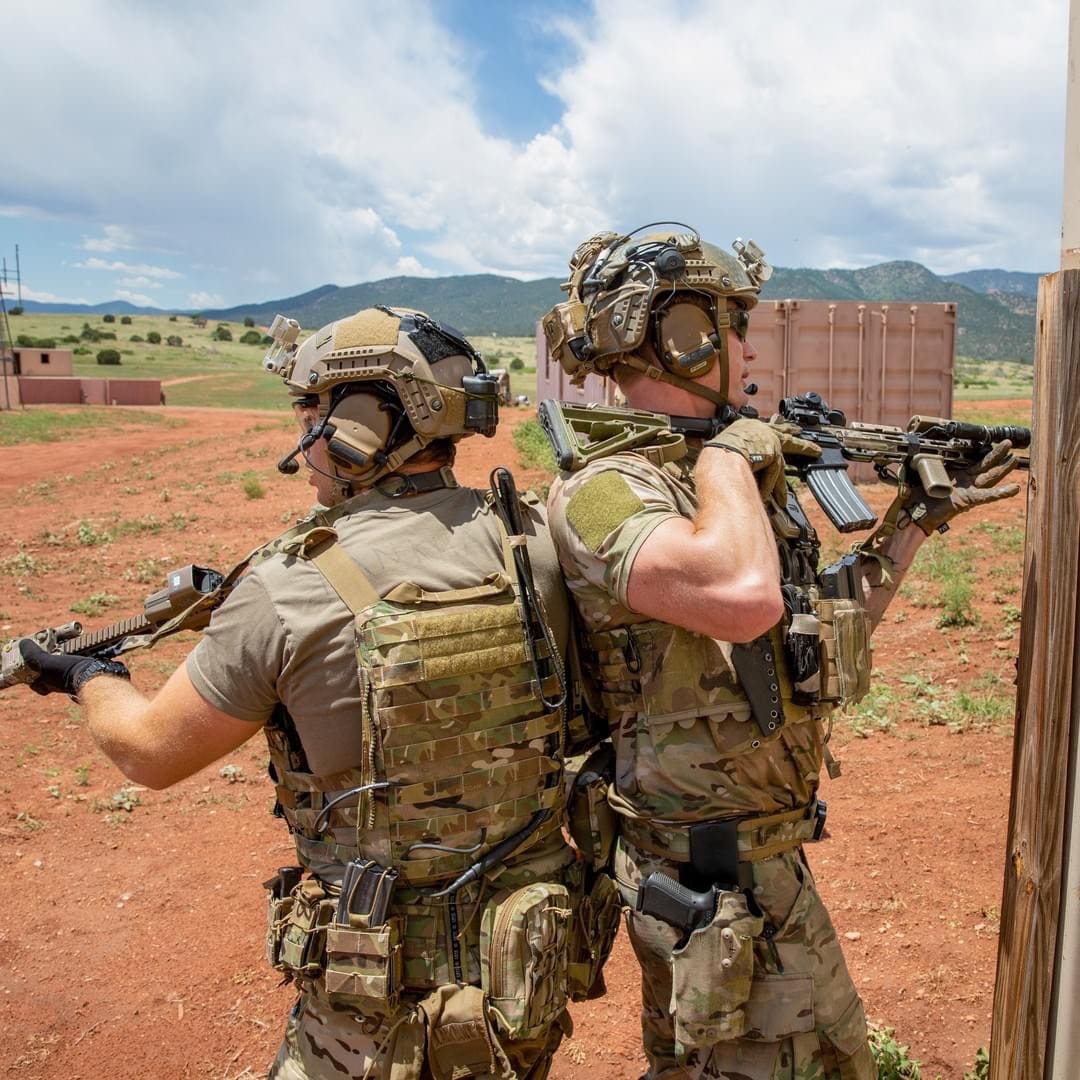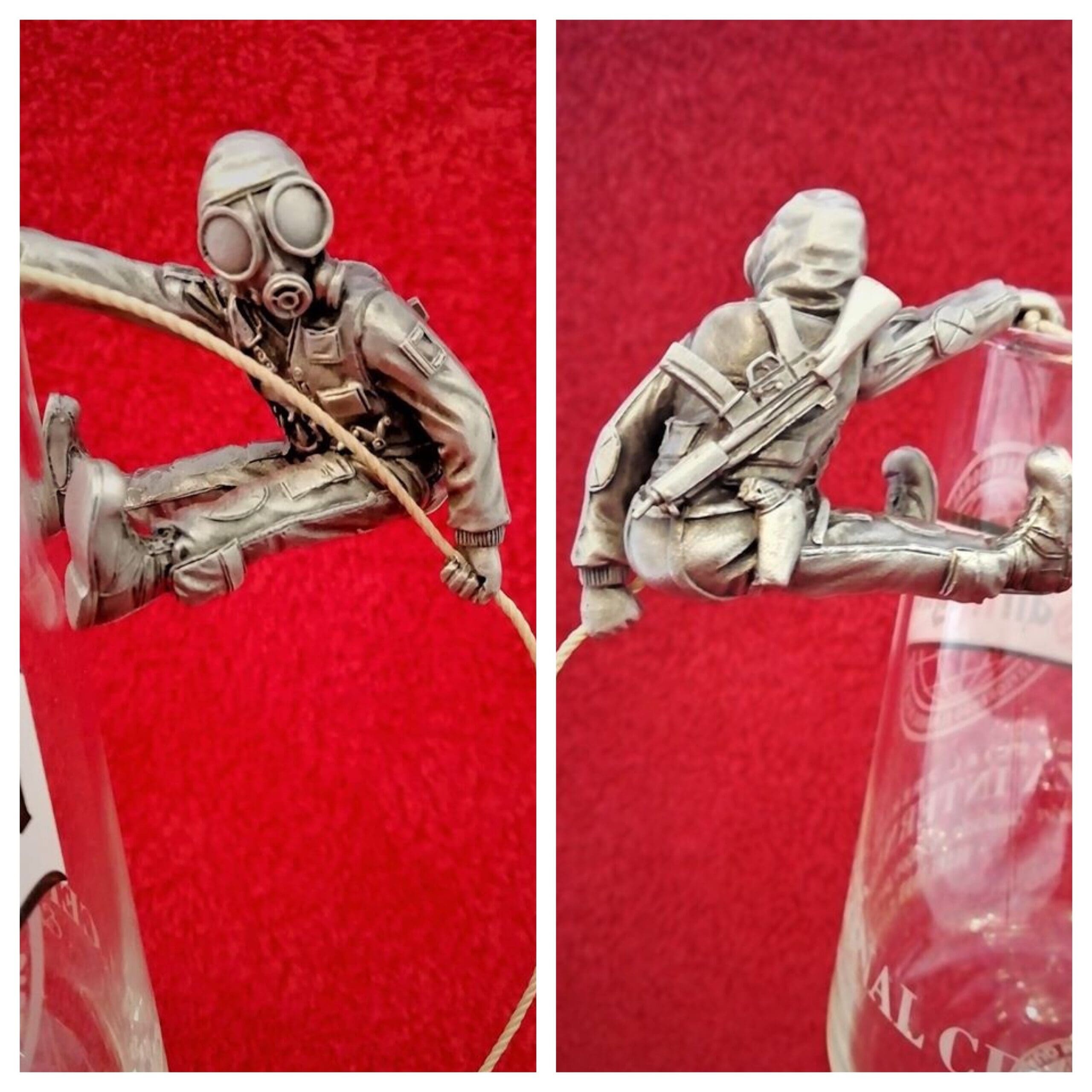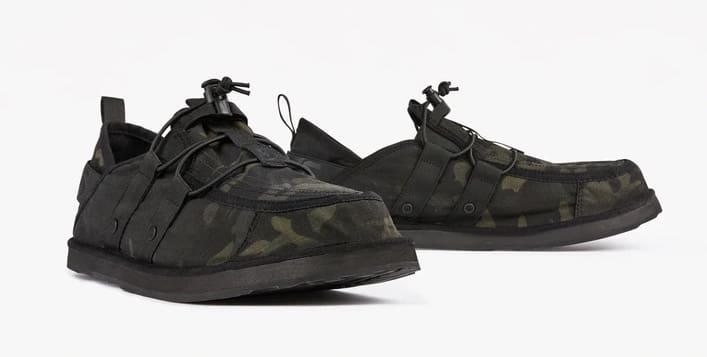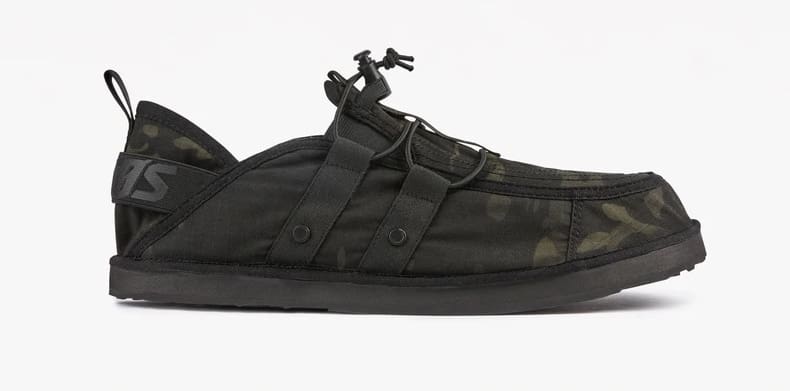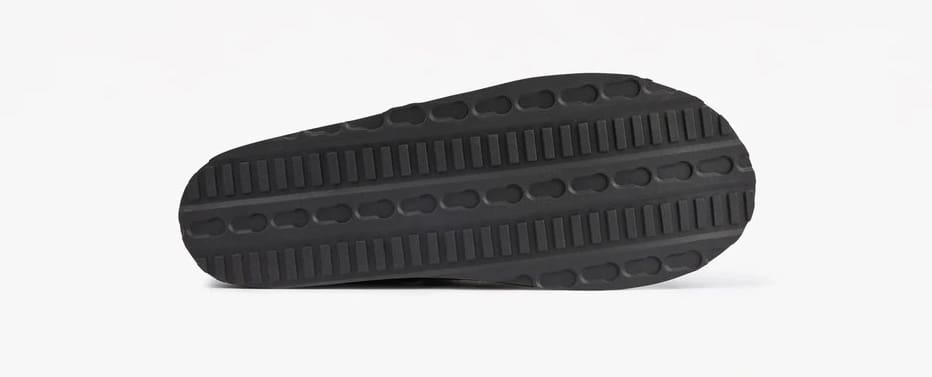GoRuck is offering a version of NFW’s Shumate Dive Watch which memorializes Special Forces legend SGM Walt Shumate.
For those unfamiliar, Shumate was instrumental in establishing the SF dive capability during its fledgling years and helped establish the Special Forces Underwater Operations School at Key West.

He is also well known for his handlebar mustache. Serving as head selection and training of the nation’s premiere SOF unit when it was established, he went on to continue his service to that unit. even after retirement. In fact, his mustache remains there, enshrined in the mess hall.
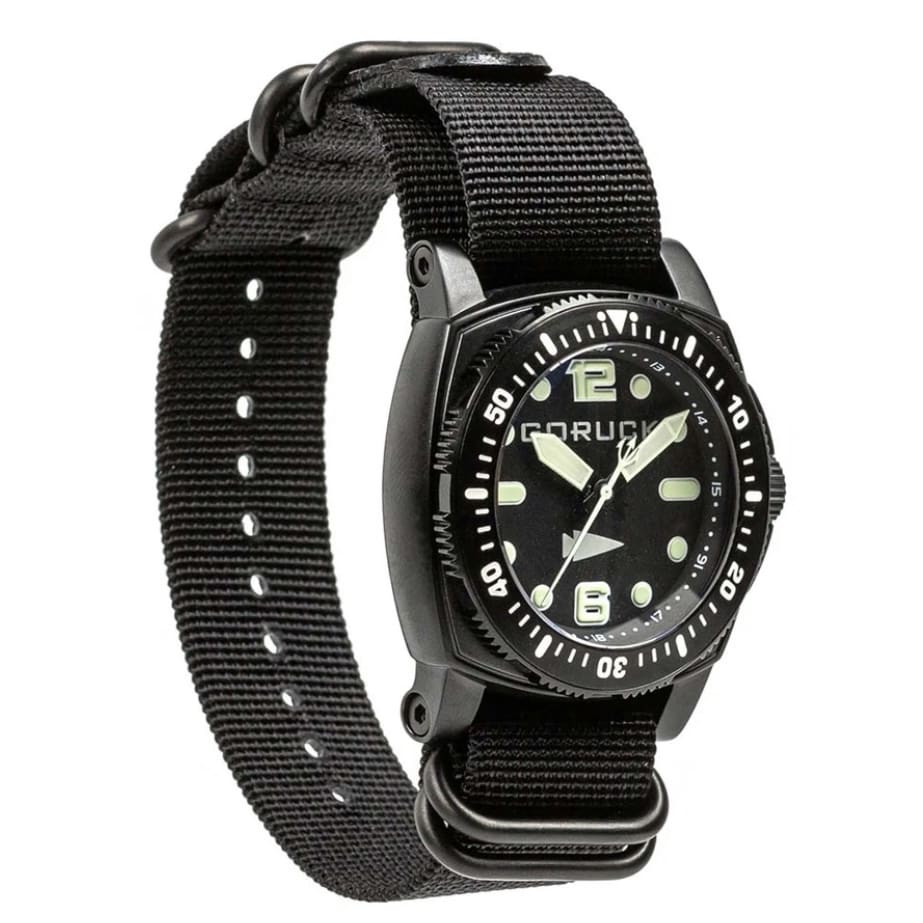
The watch from NFW features a 44mm case made from Black DOC coated 316L stainless steel and is water resistance to 300 meters / 1000 feet.
The face incorporates Swiss C3 SuperLuminova on the hands and hour markers and the 120-click, unidirectional stainless steel dive bezel is lumed at the 12 o’clock marker for dive timing in low-light.
The movement is Citizen precision quartz, with a 10-year battery life.
Finally, the watch comes packed in a metal case and includes a black ballistic nylon NATO strap and black Italian leather strap.
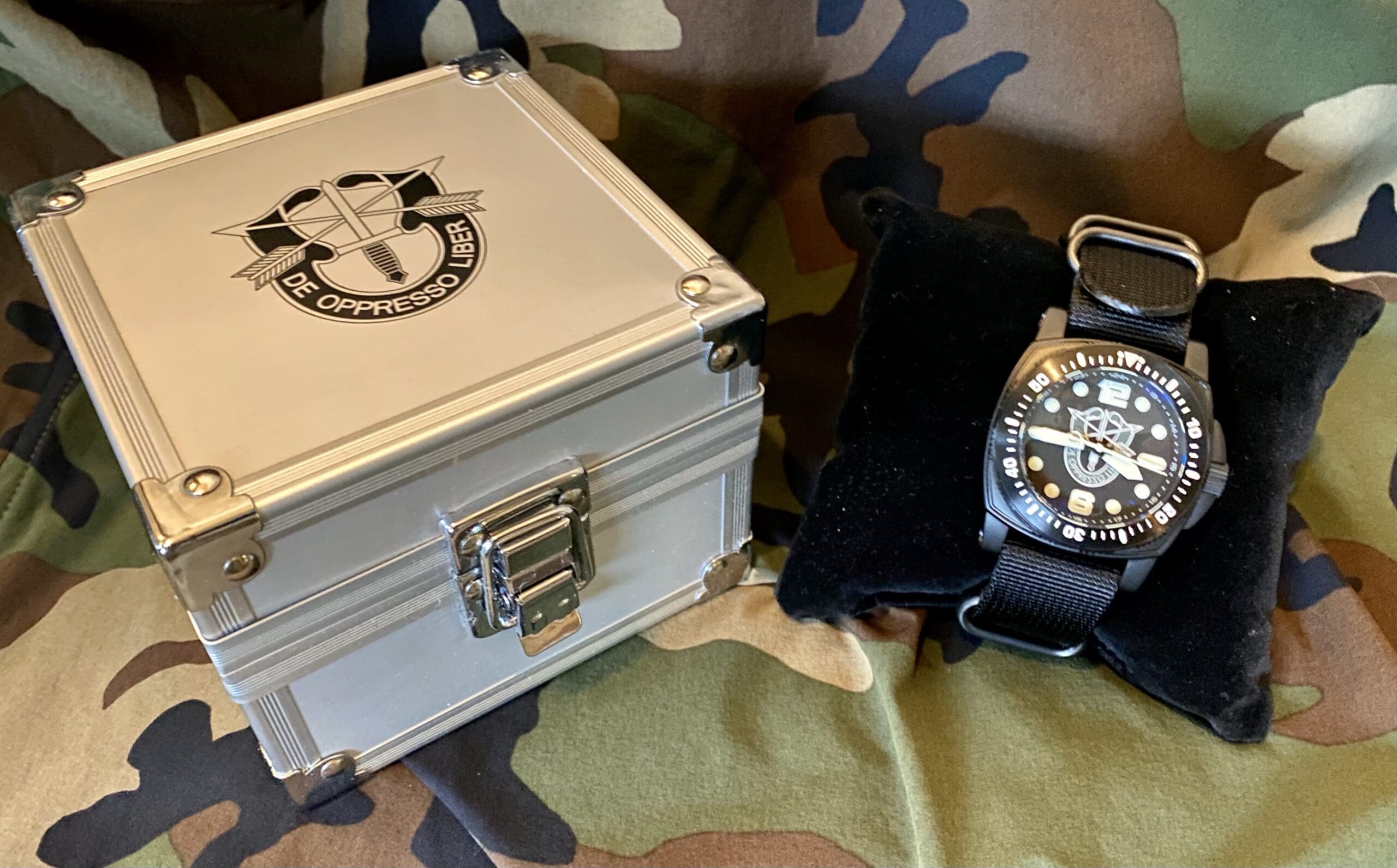
There is also a variant with the Special Forces crest and proceeds from those sales will be donated to the Green Beret Foundation.
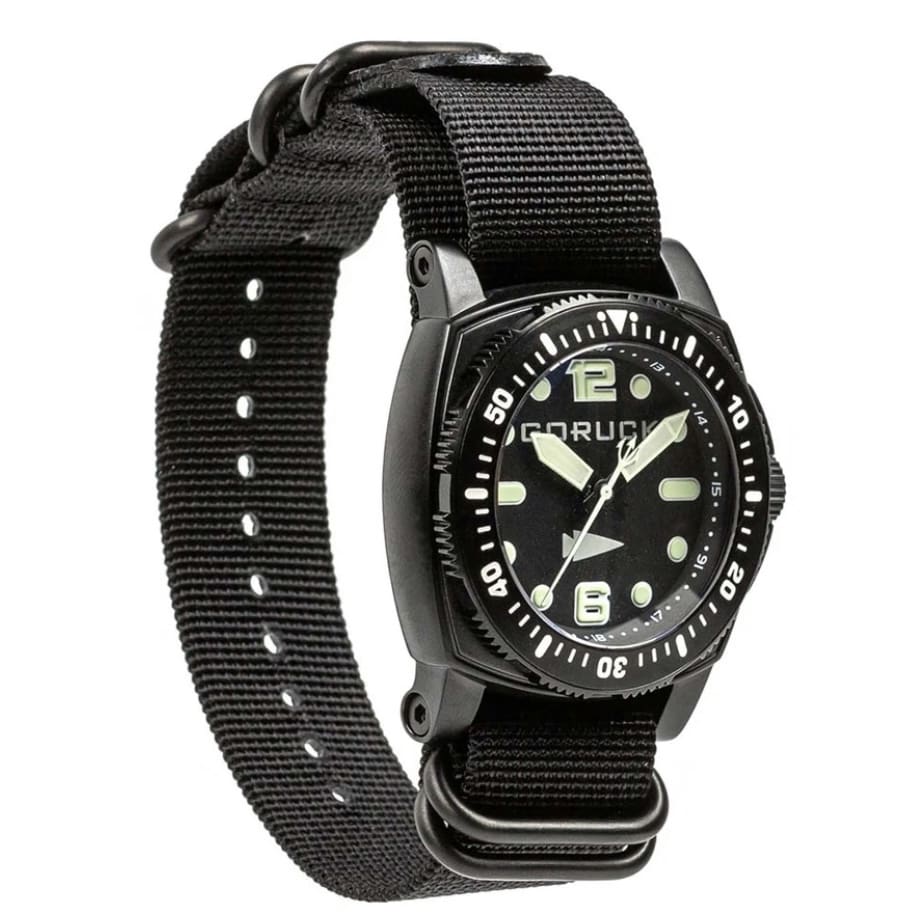
They are quick shippers. I ordered my watch on Tuesday and it arrived Thursday. Military discounts are available.
www.goruck.com/collections/accessories/products/nfw-shumate-dive-watch





